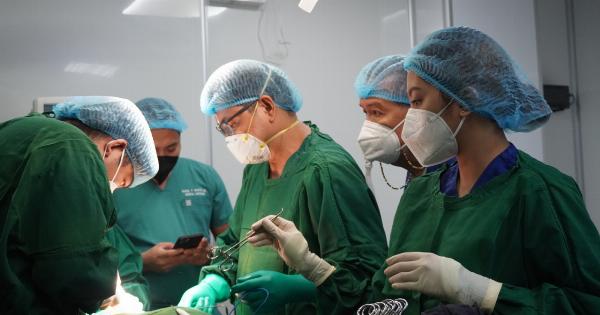Metropolitan General Hospital is known for its expertise in performing complex cardiac surgeries. Recently, a rare cardiac surgery procedure was successfully conducted on a young patient at the hospital.
This groundbreaking surgery has brought hope and opened new possibilities for treating similar cases in the future.
Understanding the Condition
The patient, a 20-year-old male named John, was diagnosed with a rare cardiac condition known as Congenital Heart Defect (CHD). CHD refers to the structural abnormalities in the heart that are present at birth.
In John’s case, he had a complex form of CHD called Transposition of Great Arteries (TGA).
TGA is a condition where the positioning of the two main arteries, the aorta and the pulmonary artery, is reversed.
This causes a disruption in the circulation of oxygen-rich blood to the body and oxygen-poor blood to the lungs, leading to several complications.
Challenges and Risks
Performing a cardiac surgery on a young patient with TGA presented numerous challenges. The primary objective was to correct the abnormal positioning of the arteries and restore normal blood flow.
However, due to the complexity of the case, the procedure involved high risks, including potential complications during and after the surgery, such as bleeding, infections, and damage to the heart’s functioning.
Furthermore, the young age of the patient presented additional concerns.
The long-term impact of the surgery, its effects on growth and development, and the patient’s ability to lead a normal life were all significant factors that required careful consideration and planning.
Metropolitan General Hospital’s Expertise
Metropolitan General Hospital has gained a reputation for its expertise in performing complex cardiac surgeries.
The hospital’s team of highly skilled surgeons, nurses, and support staff is well-equipped to handle challenging cases like John’s. They have a wealth of experience, access to state-of-the-art technology, and a multidisciplinary approach that ensures the best possible outcomes for their patients.
The Surgical Procedure
The surgical procedure involved multiple steps to correct the abnormal positioning of the arteries in John’s heart. The primary objective was to switch the aorta and pulmonary artery connections to their normal positions.
The surgery, known as an arterial switch operation, required precise planning and execution.
Under the expertise of the surgical team, the procedure began with careful monitoring of John’s vital signs and anesthesia administration. Once he was under anesthesia, the surgeon made an incision in the chest to gain access to the heart.
The connections of the aorta and the pulmonary artery were then detached and switched to their correct positions.
Special attention was given to ensure the proper alignment and suturing of the vessels. The surgery also involved re-establishing the connections of the coronary arteries, ensuring adequate blood supply to the heart muscle.
Once the corrections were made, the surgeon ensured that there were no leaks or obstructions in the newly established connections.
Post-surgery Recovery
Following the surgery, John was closely monitored in the intensive care unit (ICU) to ensure his stable recovery. Extensive care was taken to manage pain, prevent infections, and monitor his heart function.
Specialized post-operative care included administering appropriate medications, physical therapy, and regular follow-up appointments to track the progress of his recovery.
The multidisciplinary team of healthcare professionals at Metropolitan General Hospital worked collaboratively to provide comprehensive support to John during his recovery phase.
This involved regular visits from cardiologists, nutritionists, and physiotherapists who monitored his progress and provided necessary guidance to ensure a smooth transition back to a normal, healthy life.
Outcomes and Future Prospects
The cardiac surgery performed on John at Metropolitan General Hospital was a resounding success. The correction of the TGA through the arterial switch operation restored normal blood flow and eliminated the associated risks and complications.
John responded well to the surgery and showed remarkable progress.
In addition to the positive outcomes for John, this successful surgery has opened up new possibilities for similar cases in the future.
The expertise and experience gained by the surgical team at Metropolitan General Hospital can be shared with other medical professionals, leading to improved treatment outcomes and enhanced patient care worldwide.
Conclusion
Metropolitan General Hospital’s rare cardiac surgery procedure in a young patient with TGA has set a new benchmark for innovation and excellence in the field of cardiac surgery.
The successful surgery has not only provided a second chance at a healthy life for John but also paved the way for advancements in treating complex cardiac conditions. With their exceptional expertise, Metropolitan General Hospital continues to lead the way in providing life-saving surgical interventions.




























